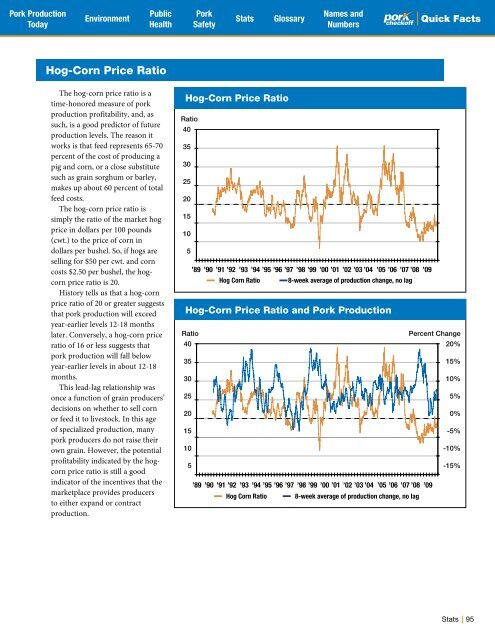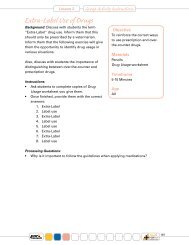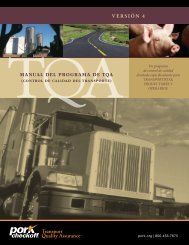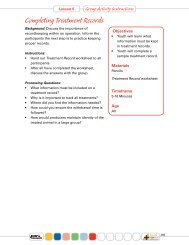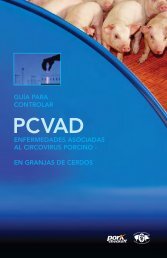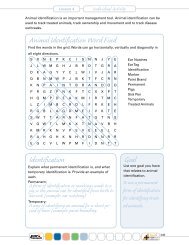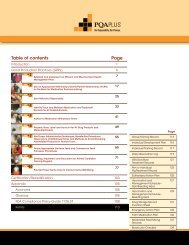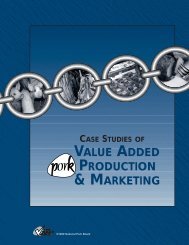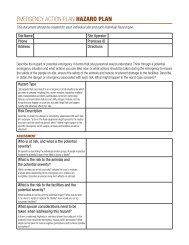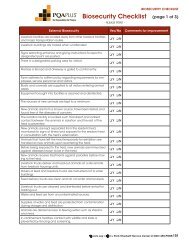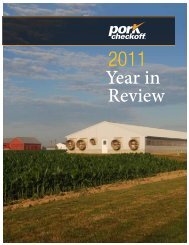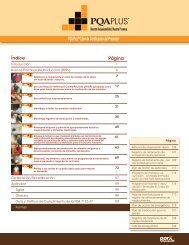The Pork Industry at a Glance - National Pork Board
The Pork Industry at a Glance - National Pork Board
The Pork Industry at a Glance - National Pork Board
You also want an ePaper? Increase the reach of your titles
YUMPU automatically turns print PDFs into web optimized ePapers that Google loves.
<strong>Pork</strong> Production<br />
Public<br />
<strong>Pork</strong><br />
Names and<br />
Environment<br />
St<strong>at</strong>s<br />
Glossary<br />
Today Health Safety Numbers<br />
Quick Facts<br />
Quick Facts<br />
Hog-Corn Price R<strong>at</strong>io<br />
<strong>The</strong> hog-corn price r<strong>at</strong>io is a<br />
time-honored measure of pork<br />
production profitability, and, as<br />
such, is a good predictor of future<br />
production levels. <strong>The</strong> reason it<br />
works is th<strong>at</strong> feed represents 65-70<br />
percent of the cost of producing a<br />
pig and corn, or a close substitute<br />
such as grain sorghum or barley,<br />
makes up about 60 percent of total<br />
feed costs.<br />
<strong>The</strong> hog-corn price r<strong>at</strong>io is<br />
simply the r<strong>at</strong>io of the market hog<br />
price in dollars per 100 pounds<br />
(cwt.) to the price of corn in<br />
dollars per bushel. So, if hogs are<br />
selling for $50 per cwt. and corn<br />
costs $2.50 per bushel, the hogcorn<br />
price r<strong>at</strong>io is 20.<br />
History tells us th<strong>at</strong> a hog-corn<br />
price r<strong>at</strong>io of 20 or gre<strong>at</strong>er suggests<br />
th<strong>at</strong> pork production will exceed<br />
year-earlier levels 12-18 months<br />
l<strong>at</strong>er. Conversely, a hog-corn price<br />
r<strong>at</strong>io of 16 or less suggests th<strong>at</strong><br />
pork production will fall below<br />
year-earlier levels in about 12-18<br />
months.<br />
This lead-lag rel<strong>at</strong>ionship was<br />
once a function of grain producers’<br />
decisions on whether to sell corn<br />
or feed it to livestock. In this age<br />
of specialized production, many<br />
pork producers do not raise their<br />
own grain. However, the potential<br />
profitability indic<strong>at</strong>ed by the hogcorn<br />
price r<strong>at</strong>io is still a good<br />
indic<strong>at</strong>or of the incentives th<strong>at</strong> the<br />
marketplace provides producers<br />
to either expand or contract<br />
production.<br />
Hog-Corn Price R<strong>at</strong>io<br />
R<strong>at</strong>io<br />
40<br />
35<br />
30<br />
25<br />
20<br />
15<br />
10<br />
5<br />
Hog Corn R<strong>at</strong>io 8-week average of production change, no lag<br />
Hog-Corn Price R<strong>at</strong>io and <strong>Pork</strong> Production<br />
R<strong>at</strong>io<br />
Percent Change<br />
40<br />
20%<br />
35<br />
15%<br />
30<br />
10%<br />
25<br />
5%<br />
20<br />
0%<br />
15<br />
-5%<br />
10<br />
-10%<br />
5<br />
-15%<br />
Hog Corn R<strong>at</strong>io 8-week average of production change, no lag<br />
St<strong>at</strong>s<br />
95


